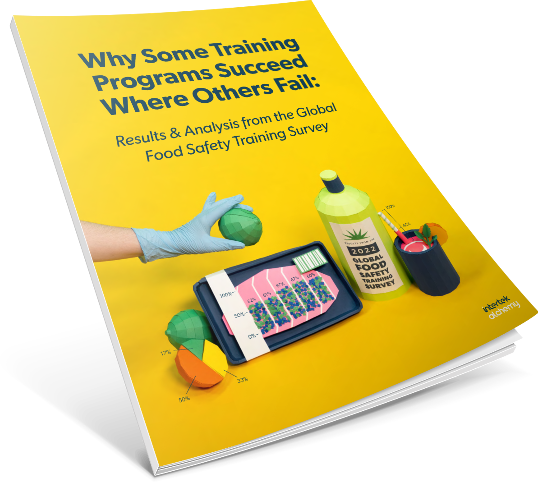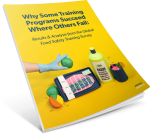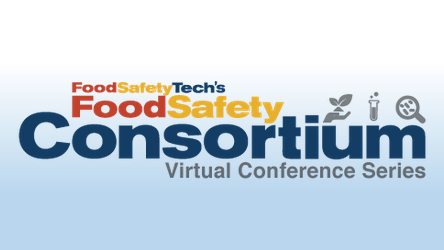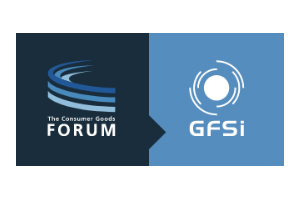Over the last 20 years, I have helped thousands of companies prepare for food safety audits. You can only imagine the plethora of questions that my team and I are asked by the food companies as they build their food safety programs. Many revolve around the basics of building an initial food safety plan. Here are the top five food safety plan questions I am asked regularly that I will address within this article:
- What are the foundations of a good food safety plan?
- Who should be involved in the process of building the food safety plan?
- Can I convert my HACCP Plan into a food safety plan?
- Are there resources and tools available to help build my food safety plan?
- Should I add food safety culture to my food safety plan?
What Are the Foundations of a Good Food Safety Plan?
FDA dictates that a food safety plan is a set of written documents that are based on food safety principles and incorporates:
- Hazard analysis
- Preventive controls
- Supply-chain programs
- Recall plan
- Written procedures to be followed for:
- Monitoring
- Corrective actions
- Verification and validation
A food safety plan is developed for every individual facility based on the unique issues at each facility. For example, if a company has multiple processing plants processing the exact same product in multiple areas throughout the country, each facility will need their own unique plan. The reason for that is each facility may have different risks based on process flow layout, equipment used, suppliers and even employee and management cultures.
Each facility will have a separate HACCP plan detailing each chemical, biological and physical risk for the layout of the operation and equipment used. Recall plans will need to be created for each facility’s unique customers. Supplier monitoring will need to be developed for each facility’s unique suppliers.
Who Should be Involved in the Process of Building the Food Safety Plan?
Creating the team to build your food safety plan is one of the most important steps in the process and probably the most overlooked. Most teams I have seen include the QA and/or food safety person, the operations manager and the maintenance manager. This is too limited and often leads to risks being missed and processes that are either too simple or over complicated. A food safety team should have a member from each of the following departments:
- Food Safety/QA
- Operations
- Maintenance
- Crew or shift lead
- Executive management (preferably the CEO)
- Sanitation
- A line worker or two
Why the CEO, a shift supervisor and line worker(s)? The CEO creates the company culture and should be funneling information down from the top. If the CEO is part of the team, the whole organization will see the importance of the food safety plan.
Line workers and crew leads are on the floor working the processes day in and out. They will be key to implementation of the plan. As processes are created, the line workers and crew chiefs can provide amazing insight on the processes and reporting tools that will be most effective on the floor. Having this information before implementation will save hours of time and minimize the risk of having to alter processes that don’t work in reality.
Can I Convert my HACCP Plan into a Food Safety Plan?
Many companies have a basic HACCP plan for their facilities. Often the question is, “Isn’t my HACCP plan a food safety plan?” The answer is yes and no. Basically, you can have an HACCP plan and not have a food safety plan, but you cannot have a food safety plan without an HACCP plan.
A food safety plan is more encompassing than an HACCP Plan. Looking at your facility floor plan and analyzing chemical, biological and physical risks is a key part of a food safety plan. The food safety plan adds another layer of monitoring for all risks and provides added processes for preventative controls, recalls and supplier monitoring.
Also, companies that have only an HACCP plan often have not been keeping that plan up to date with an all encompassing team described above. Once the new, more robust teams are created and they start building the food safety plan, many find they need to significantly alter their HACCP plans.
Are There Resources and Tools Available To Help Build My Food Safety Plan?
Luckily, we live in a technical world full of inexpensive or free tools. There are many very smart people that have services available to assist in creating a food safety plan as well. Here is a list of some free and low cost solutions:
Free Solutions:
- The FDA created a free solution, the “FDA Food Safety Plan Builder.” This solution walks you through the process of creating a food safety plan step-by-step.
- If you need a food safety plan for a specific GFSI Standard, walking through the individual check lists provided by the standards you choose will lead you to the creation of a food safety plan, albeit a very robust one.
- If you do not need full certification, building a food safety plan based on GFSI Global Markets is a great stepping stone and they have a free toolkit.
Paid Solutions:
- There are many software tools that you can purchase. The pricing and features will vary based on the company. Google “Food Safety Plan Software” and you will see the many options available.
- Working with a consultant is a great option if you don’t have the time to learn the process of creating, building and implementing a food safety plan. There are many great and not so great consultants in the industry. If you decide to go this route make sure you interview at least three consultants and ask the following questions:
- “Are you going to coach us on how to own and maintain our food safety program or do you do everything on your own?” Many consultants think they “own” the programs they develop, as if they are proprietary systems. Some will charge you year after year to use their program. Avoid these consultants.
- “How long have you been consulting?”
- “May I talk with a couple of your past clients?” If they are unwilling to provide testimonials that may be a red flag.
Should I Add Food Safety Culture to My Food Safety Plan?
Recently, I wrote an article for FoodSafetyTech.com titled “The Costs Of Food Safety: Correction vs. Prevention,” and the opening sentence is “Every company that grows, produces, packs, processes, distributes and serves food has a food safety culture. In the food industry, when looking at food safety culture there are essentially two groups: The correction and the prevention groups.”
By starting the process of creating a food safety plan, you are already crossing the chasm into the “prevention group.” Adding elements of food safety employee training, recognition and food safety behavior management into your food safety plan and implementing those elements will alter your organization in some of the most positive ways.
Every food company has a food safety culture, some are toxic and others are refreshingly positive. If you have read this article to the end I assume you either have a positive food safety culture or would like to create one. Incorporating key teams members in your planning and taking advantage of the resources available will place you on the path to developing an effective food safety plan and a company culture that embraces food safety.





















